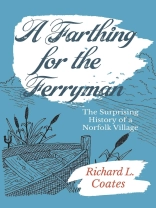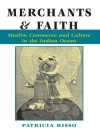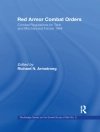A Farthing for the Ferryman is the history of a small corner of West Norfolk from its earliest known inhabitants to the present day.
Even before the last ice age, people lived in this area. Finds in Brecklands include axes, spears and daggers from the early Paleolithic era and by 2500 BC nearby Grime’s Graves was an extensive flint mine. Later still, the Iceni, Romans, Saxons and Danes all impacted the area.
The focal point of this story is the ancient town of Stoke Ferry on the bank of the Wissey and the edge of the fens. Already, by the time of the Norman conquest and Domesday, Stoches, as it was then called, was a significant agricultural centre.
This book traces Stoke Ferry’s history through times of considerable wealth and comparative decline. Families and individuals shaped its growth, and their histories are recounted. Perhaps most remarkable was the establishment, by the will of James Bradfield, of a free school for poor children more than seventy years before compulsory education was introduced in England.
Today, Stoke Ferry may be typical of many rural communities facing challenges and opportunities to develop into the twenty-first century. Can this place with such a long and surprising history thrive? Why not?
สารบัญ
Introduction
Stoke Ferry – Market Town or Hamlet?
The First Part – Ye Anciente Historie
Chapter One – Prehistoric Times – Before the Romans
Chapter Two – From Rome to Normandy – an Era of Conquests
Chapter Three – Catastrophe and Domesday
Chapter Four – Normans, Tudors and Stuarts
The Second Part – The Vital Importance of Transport
Chapter Five – Waterways – the Fens and the Wissey
Chapter Six – Roads, Turnpikes and Droves
Chapter Seven – The Coming of the Railway
The Third Part – The Creation of an Important Town
Chapter Eight – An Age of Affluence and Grand Designs
Chapter Nine – Hotels and Hostelries
Chapter Ten – All Saints Church
Chapter Eleven – Education, Chapels and the Community
The Fourth Part – Lives, Loves , Exploits and Deeds
Chapter Twelve – James Bradfield – Benefactor
Chapter Thirteen – Micklefields – Solicitors
Chapter Fourteen – Etheridges – The Merchants
Chapter Fifteen – Harveys and Helshams – Medicine and Wealth
Chapter Sixteen – Winfields – Merchants, Wharfingers and a Knighthood
Chapter Seventeen – Some Notable Local Characters
The Fifth Part – The Village in the Modern Age
Chapter Eighteen – The Post-war World – a New Order
Chapter Nineteen – The Bypass and After
Chapter Twenty – Opportunity for Renaissance
Acknowledgements
เกี่ยวกับผู้แต่ง
Richard Coates grew up in Stoke Ferry and attended school there in the 1950s, before moving to Downham Grammar School and Jesus College, Oxford. After graduating, he spent his career in various aspects of human resource management in the UK, Netherlands and the Middle East.
Writer of business articles, industry reports and co-author (with daughter, Vicki) of three children’s books, this is his first full-length publication. He recently edited his mother Doris Coates’s Derbyshire-based books Tuppeny Rice and Treacle and Tunes on a Penny Whistle, republished by The Harpsden Press.
Richard now lives in Bath with his wife, Louise, and spends his time travelling and writing. He is also a partner in a community theatre in Dubai.












